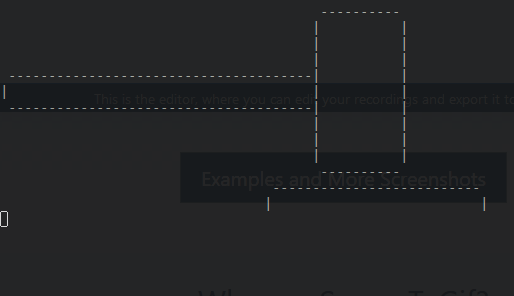5
1
The goal is to make a two frame animation with ASCII art of a hammer smacking a table.
Trailing white-space is allowed and the frames need to repeat continuously. The program should iterate over both frames with a time of 0.5 seconds between frames.
Lowest byte count wins for each language!
Sample:
Animation Frames:
Frame 1:
-------------------
| |
| |
| |
-------------------
/ /
/ /
/ /
/ /
/ /
/ /
/ /
/ /
/ /
\ /
---------------------------
| |
Frame 2:
----------
| |
| |
| |
--------------------------------------| |
| | |
--------------------------------------| |
| |
| |
| |
----------
-------------------------------
| |

9Welcome to the site! This sounds like a good idea, but you need to be way more specific, and spell out what the anination should be like. See other challenges in the [tag:ascii-art] or [tag:animation] tags for reference – Luis Mendo – 2018-03-11T16:54:43.030
@LuisMendo Is This Better? – None – 2018-03-11T17:23:26.580
1@PythonDude29 If the answer needs to be a program/function which takes a number (say 1/2 or 0/1) and produces the appropriate frame, then you need to state so. If frame 1 needs to be displayed and then exchanged for frame 2 after a predetermined time or event, you need to state so. – Adám – 2018-03-11T17:29:56.633
You also need to clarify if trailing whitespace is acceptable. – Adám – 2018-03-11T17:31:12.790
I think I am Done. – None – 2018-03-11T17:39:25.173
@Scrooble Is that everything? Or is there more specifics I need – None – 2018-03-11T18:10:53.217
1I'm not a fan of these line controllers—it is my understanding that languages like Charcoal don't operate that way. I'd refer to other [tag:ascii-art] and [tag:kolmogorov-complexity] questions. However, this challenge does now fall within this site's requirements (IMO), so I'm voting to reopen. – Khuldraeseth na'Barya – 2018-03-11T20:23:36.480
@Scrooble Hmm I only know a couple languages. I know Python, A Bit Of JavaScript And A bit Of C#. I used the line controllers when I did my own(Where I got the idea) – None – 2018-03-11T20:28:41.140
Must the font be monospace? Is graphical output allowed? – user202729 – 2018-03-12T11:33:00.040
2Also please don't write in title case. – user202729 – 2018-03-12T11:33:35.973
Doesn't this pretty much end up as run length encoding in just about every language? – fəˈnɛtɪk – 2018-05-01T01:42:36.053
This is kinda a combination of this and most ascii art with high repetition/run length, but i'm not sure if it should be considered a duplicate.
– fəˈnɛtɪk – 2018-05-01T01:48:22.167@fəˈnɛtɪk I think it's more like this one, then the one you linked. That one also replaces the current ASCII art at every iteration.
– Kevin Cruijssen – 2018-05-01T08:11:26.743